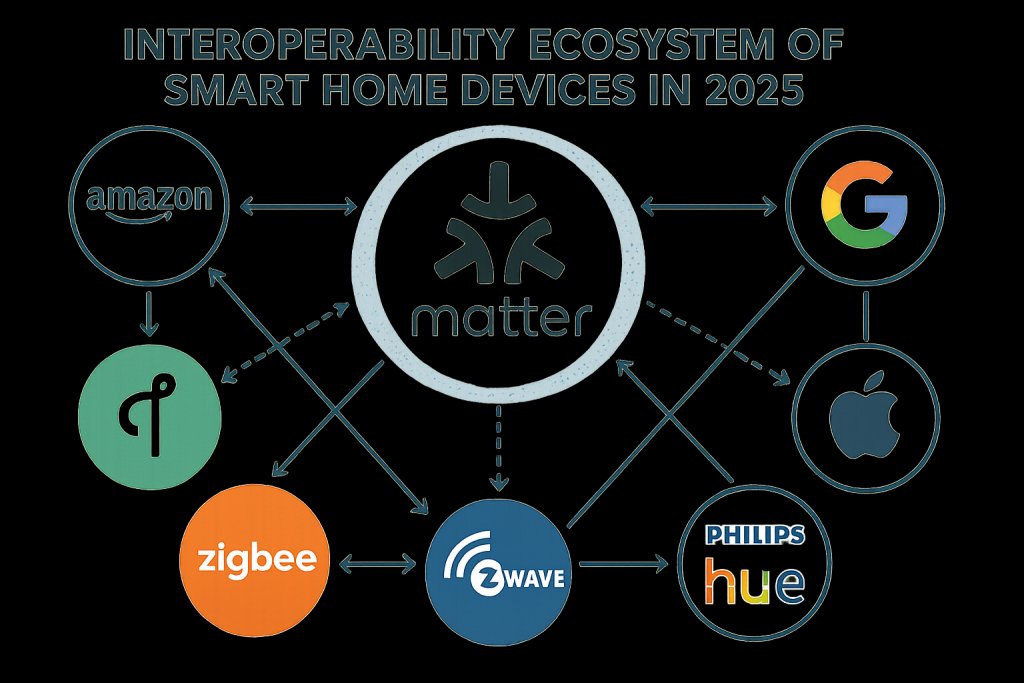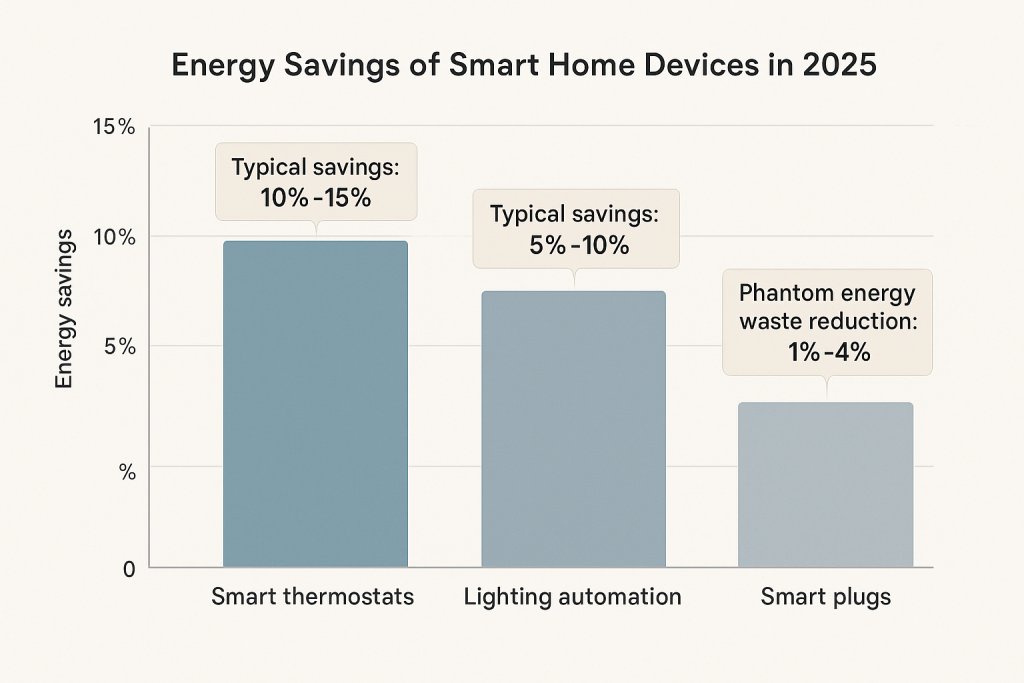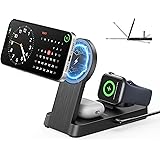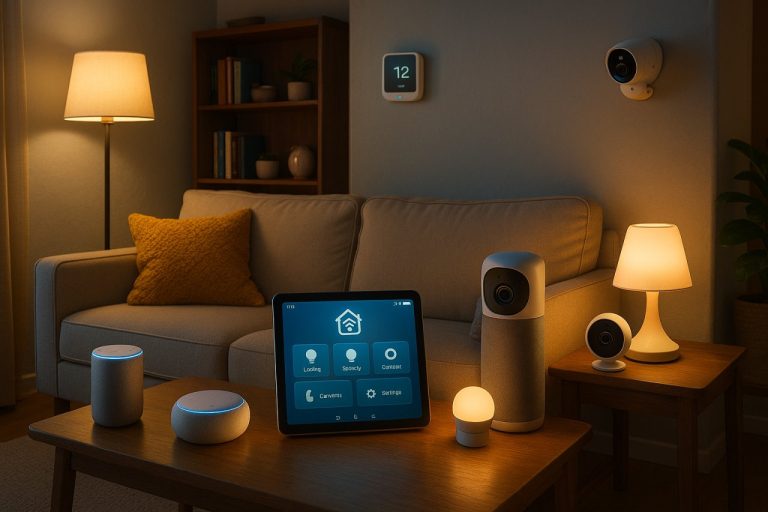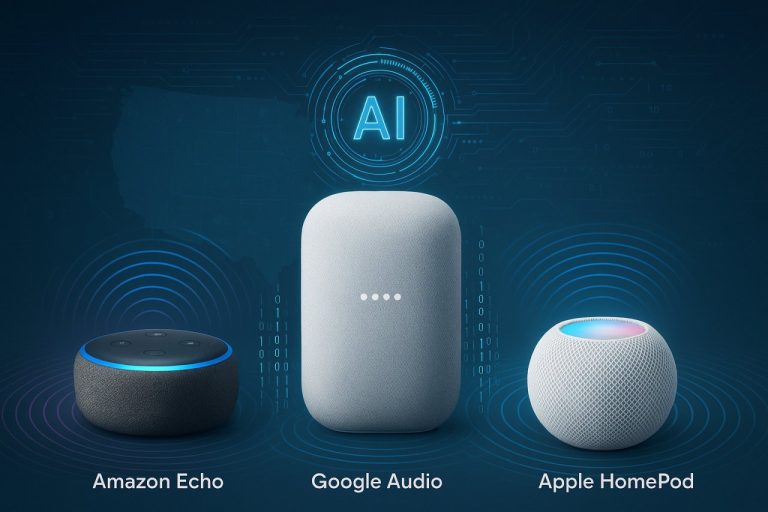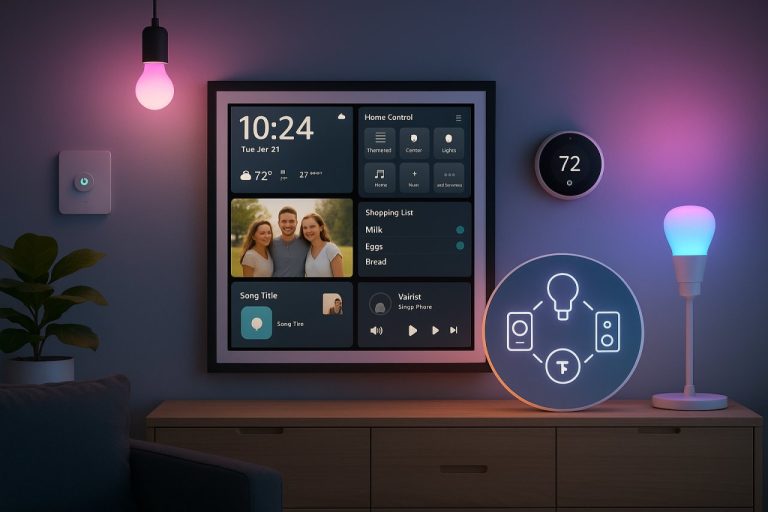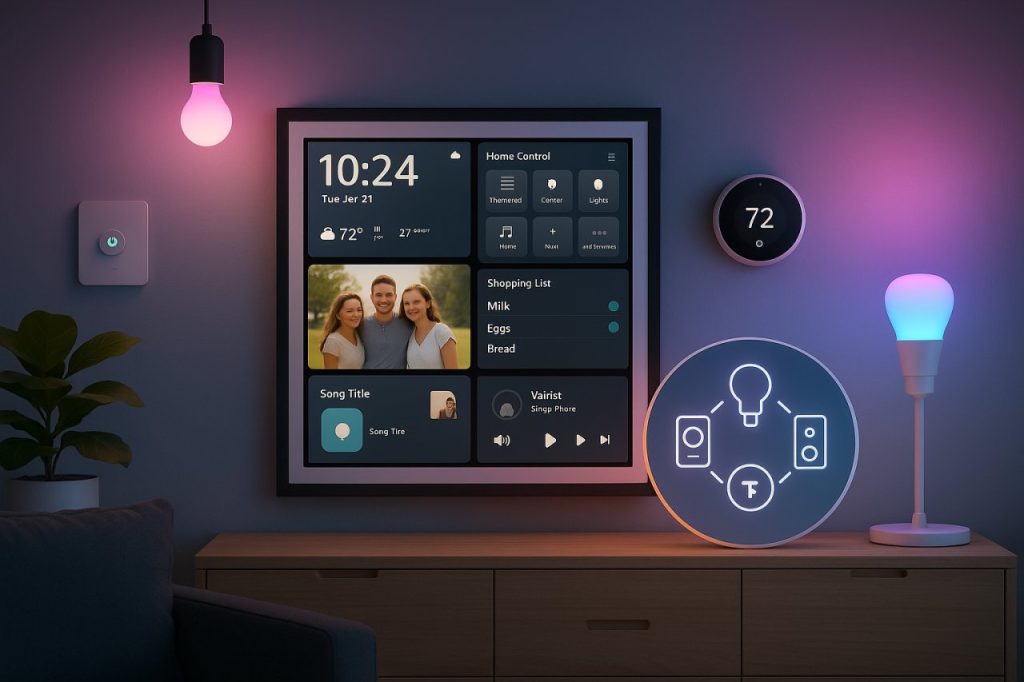
In a casual cross-notes comparison with good friends we faced: What about the dizzying pace of smart home tech in 2025? The market is reportedly on track to surpass $300 billion this year, fueled by innovations unveiled at CES 2025 and other industry events. Yet, amid this flood of gadgets, separating genuinely useful devices from hype-driven fluff requires more than just eyeballing specs or flashy marketing. My feeling is that a thorough, evidence-driven analysis is necessary to make sense of what’s worth your time and money.
This post aims to do just that—laying out the top smart home devices and gadgets of 2025 with a critical eye on their technical merits, real-world benefits, and ecosystem fit. If you’re interested in securing your smart home, I recommend checking out How to Secure Your Smart Home: Expert IoT Device Protection Strategies and for newcomers, the Complete Beginner’s Guide to Setting Up a Smart Home in 2025 offers practical tips.
Why The Right Smart Home Devices Are Crucial in 2025: Energy, Security, and Convenience
At a high level, smart home devices promise three main benefits: energy savings, enhanced security, and convenience. But how well do they deliver on these promises in 2025?
-
Energy Savings: Multiple sources estimate that smart homes use 30-40% less energy than conventional setups[^1][^2]. Smart thermostats alone can reduce heating energy consumption by 10-12% and cooling by 15%[^3]. Lighting automation can cut energy use by 35-70%[^4]. However, actual savings depend heavily on user behavior, home insulation, and device configuration[^5]. Phantom energy waste—power consumed by devices when “off”—still accounts for roughly 13.7% of a typical U.S. home’s annual energy cost[^6], but smart plugs and power strips are increasingly effective at mitigating this.
-
Security: FBI data indicates the average property theft costs $2,316, and homes without security systems are three times more likely to be burglarized[^7]. Smart security systems like SimpliSafe and ADT offer rapid response times (10-30 seconds after intrusion detection) and features such as intruder intervention and video monitoring[^8][^9]. Yet, no system is foolproof, and privacy concerns remain, especially with always-on cameras and voice assistants[^10].
-
Convenience: Voice assistants and automation routines simplify daily tasks, from adjusting lighting to managing appliances. The interoperability improvements with standards like Matter and Thread in 2025 mean devices from different brands can work together more seamlessly than before[^11]. Still, ecosystem lock-in and complexity can frustrate users, especially those not keen on troubleshooting network issues.
My guess is that while the headline stats are impressive, the real-world effectiveness of smart home devices depends on thoughtful setup and ongoing management, which is often overlooked.
Does that seem reasonable?
Criteria for Selecting the Top Smart Home Devices
Transparency is key here. I selected devices based on:
- Energy Efficiency: Verified energy savings through independent benchmarks or manufacturer data.
- Security Performance: Features like encryption, response times, and vulnerability history.
- Interoperability: Support for open standards (Matter, Zigbee, Z-Wave) to avoid ecosystem lock-in.
- User Experience: Ease of installation, daily use, and reliability.
- Price-Performance Balance: Value relative to cost, avoiding overpriced gadgets with marginal benefits.
I also considered ecosystem compatibility, since a device that plays well with others reduces friction in building a cohesive smart home. This systems-level approach reflects my background in microprocessor design, where integration and standards matter as much as raw specs.
With that framework, here are the top 10 smart home devices and gadgets of 2025.
Navigating the smart home ecosystem: interoperability standards like Matter and Thread aim to break down barriers between devices, a key focus in 2025’s smart home landscape.
The Top 10 Smart Home Devices & Gadgets of 2025
1. Amazon Echo Show 15 (2024)
The Echo Show 15 continues to serve as a versatile smart home hub and display. Its 15.6-inch screen with a motorized base allows dynamic positioning, which is a neat hardware trick not seen in many competitors. Alexa integration remains robust, now with Matter support enhancing interoperability.
Pros:
- Large, vibrant display ideal for family calendars, video calls, and smart home control.
- Motorized base for adjustable viewing angles.
- Broad compatibility with Alexa-enabled devices and Matter.
Cons:
- Alexa’s privacy concerns persist.
- Pricey compared to smaller smart displays.
- Somewhat limited in supporting non-Alexa ecosystems.
At around $250, it competes well against Google’s Nest Hub Max but leans heavily on Alexa’s ecosystem. For users invested in Amazon’s smart home, it’s a solid centerpiece[^12].
2. Google Nest Hub Max
Google’s flagship smart display offers Thread support and deep integration with Google Assistant. Its camera and voice recognition features enhance security and personalization.
Pros:
- Excellent voice recognition and contextual assistance.
- Thread support for faster, low-power device communication.
- Strong privacy controls with physical camera shutter.
Cons:
- Less screen real estate than Echo Show 15.
- Google’s data collection policies may concern privacy-conscious users.
In terms of energy efficiency, the Nest Hub Max includes ambient light sensors that adjust brightness intelligently, contributing to modest power savings[^13].
3. Apple HomePod (2nd Generation)
Apple’s HomePod 2nd gen focuses on audio quality and Siri integration, now with Matter support and environmental sensors (temperature, humidity).
Pros:
- Superior sound quality for music lovers.
- Tight integration with Apple HomeKit ecosystem.
- Matter support improves interoperability.
Cons:
- High price point (~$299).
- Limited appeal outside Apple-centric households.
- Siri’s smart assistant capabilities lag behind Alexa and Google Assistant.
The HomePod is a niche but excellent choice for those fully embedded in Apple’s ecosystem[^14].
4. Ecobee Smart Thermostat Premium
Ecobee’s latest thermostat offers advanced sensor technology and automation features that can cut heating and cooling energy use by up to 20%[^15].
Pros:
- Multiple room sensors for balanced temperature control.
- Integration with Alexa, Google Assistant, and Apple HomeKit.
- Energy reports and remote control via app.
Cons:
- Installation can be tricky for DIYers.
- Higher upfront cost than basic thermostats.
Given that heating and cooling consume over half of home energy, this device’s impact on bills can be substantial[^16].
5. Philips Hue White and Color Ambiance Smart LED Bulb
Philips Hue remains a leader in smart lighting, offering a wide color range and excellent brightness.
Pros:
- Supports Zigbee and Matter.
- High brightness and color accuracy.
- Extensive ecosystem and third-party integrations.
Cons:
- Premium price compared to budget brands like Govee.
- Requires a Hue Bridge for full functionality.
Smart lighting can reduce energy consumption by up to 70%, making Hue bulbs a worthwhile investment[^17].
6. SimpliSafe Home Security System
SimpliSafe offers a DIY security system with professional monitoring options and fast response times (~10 seconds after intrusion detection)[^18].
Pros:
- Easy installation.
- No long-term contracts.
- Intruder intervention features.
Cons:
- Monitoring plans can be pricey.
- Limited home automation compared to competitors.
It’s a strong contender for those prioritizing security without professional installation hassles.
7. Ultraloq U-Bolt Smart Lock (UWB Edition)
Ultraloq’s smart lock uses ultra-wideband (UWB) for precise proximity detection, enhancing security and convenience.
Pros:
- Multiple unlocking methods: fingerprint, keypad, smartphone.
- UWB improves anti-spoofing.
- Integrates with major smart hubs.
Cons:
- Battery life varies with usage.
- Setup can be complex for non-technical users.
Smart locks like this are increasingly standard for secure, keyless home entry[^19].
8. Roborock Saros Z70 Robot Vacuum
The Saros Z70 features a robotic arm for edge cleaning and advanced navigation tech.
Pros:
- Efficient cleaning paths.
- Obstacle avoidance and robotic arm for corners.
- Good battery life.
Cons:
- Maintenance of robotic arm adds complexity.
- Higher price than simpler models.
It competes closely with Dreame X50 Ultra, which trades robotic arm for obstacle climbing ability[^20].
9. TP-Link Kasa Smart Wi-Fi Plug Slim (KP125M)
An affordable smart plug with energy monitoring, helping reduce phantom energy waste.
Pros:
- Compact design.
- Real-time energy consumption tracking.
- Easy setup and app control.
Cons:
- Wi-Fi only, no Zigbee/Z-Wave.
- Limited to 15A devices.
At roughly $25, it’s a budget-friendly entry point to smart energy management[^21].
10. Nanoleaf Smart Multicolor Floor Lamp
Nanoleaf’s floor lamp offers customizable lighting with integration into major ecosystems.
Pros:
- Unique design and lighting effects.
- Supports Matter and voice assistants.
- Energy efficient LEDs.
Cons:
- Niche appeal.
- Higher price than standard lamps.
Great for users wanting ambiance and style alongside smart features[^22].
Smart Home Hubs: The Nervous System of Your Connected Home
Hubs like the Amazon Echo (4th Gen), Aeotec Smart Home Hub, Ikea Dirigera, and Hubitat Elevation serve as the central nervous system of a smart home. They mediate communication between devices using protocols like Zigbee, Z-Wave, and Matter.
- Amazon Echo (4th Gen): Best for most users due to Alexa integration and broad device support[^23].
- Aeotec Smart Home Hub: Supports multiple protocols, ideal for power users[^24].
- Ikea Dirigera: Affordable and user-friendly, great for newcomers[^25].
- Hubitat Elevation: Offers granular control for enthusiasts willing to tinker[^26].
Choosing the right hub depends on your technical comfort and ecosystem preferences.
Comparison: Smart Home Hubs
| Item | Key features | Pros | Cons |
|---|---|---|---|
| Amazon Echo (4th Gen) | Built-in Zigbee hub, Alexa voice assistant, supports Wi-Fi and Bluetooth, smart speaker functionality | Easy Alexa integration, multi-room audio, affordable, wide device compatibility | Limited to Alexa ecosystem, fewer advanced automation options compared to dedicated hubs |
| Aeotec Smart Hub | Z-Wave and Zigbee support, powered by SmartThings platform, cloud and local automation, supports wide range of devices | Robust device compatibility, strong automation capabilities, local processing reduces latency | Requires SmartThings account, cloud dependency for some features, higher price point |
| Ikea Dirigera | Zigbee 3.0 hub, Ikea Home smart app integration, supports Ikea and select third-party devices | Affordable, simple setup, good for Ikea ecosystem users, local control with app | Limited third-party device support, fewer advanced automation features |
| Hubitat Elevation | Local automation hub, supports Zigbee, Z-Wave, and LAN devices, advanced rule engine | Fully local control, no cloud dependency, highly customizable, strong privacy | Steeper learning curve, less user-friendly interface, smaller community than mainstream hubs |
Best for
The Amazon Echo (4th Gen) is best for users seeking an affordable, voice-controlled smart speaker with basic hub functionality. Aeotec Smart Hub suits those wanting robust automation with broad device compatibility via SmartThings. Ikea Dirigera is ideal for budget-conscious users invested in the Ikea smart ecosystem. Hubitat Elevation is perfect for advanced users prioritizing local control, privacy, and customization without cloud reliance.1,2,3,4,5,6
Market Share 2025: Amazon Echo (4th Gen) vs Aeotec Smart Hub vs Ikea Dirigera vs Hubitat Elevation (percent)
Security Considerations: How to Secure Your Smart Home in 2025
Smart homes are convenient but bring new attack surfaces. Recent research shows 72 of 81 IoT devices surveyed send data to third parties, raising privacy concerns[^27]. Common vulnerabilities include weak passwords, unpatched firmware, and unsecured wireless protocols.
Best practices include:
- Using strong, unique passwords and two-factor authentication.
- Segmenting IoT devices on separate networks.
- Regularly updating device firmware.
- Disabling unnecessary features like remote access if unused.
For a deeper dive, see How to Secure Your Smart Home: Expert IoT Device Protection Strategies.
Affordable Smart Home Gadgets: Getting Started Without Breaking the Bank
Budget-conscious users can still enjoy smart home benefits:
- Echo Dot (5th Gen): Voice control for ~$50[^28].
- Google Nest Hub (2nd Gen): Smart display for ~$100[^29].
- TP-Link Kasa Smart Plugs: Affordable energy monitoring[^21].
- Govee Smart Bulbs: Budget lighting alternatives[^30].
These devices offer solid functionality with minimal setup complexity.
Energy Efficiency and Smart Home Devices: What the Data Tells Us
Smart thermostats and lighting systems have become key players in reducing household energy consumption, backed by substantial data demonstrating their effectiveness. Here’s a closer look at how these devices contribute to energy savings:
- Smart Thermostats: Devices like the Nest thermostat have been shown to save approximately 10-12% on heating costs and up to 15% on cooling expenses[^3]. These savings stem from their ability to learn user habits, optimize temperature settings, and adjust heating or cooling based on occupancy and weather forecasts. Additionally, many smart thermostats offer remote control via smartphone apps, allowing users to make adjustments on the go, further enhancing energy efficiency.
- Smart Lighting Systems: By utilizing LED technology combined with smart controls such as motion sensors, dimmers, and scheduling, smart lighting can reduce electricity consumption by up to 70% compared to traditional incandescent bulbs[^4]. These systems enable lights to turn off automatically when rooms are unoccupied and adjust brightness based on natural light availability, significantly cutting down unnecessary energy use.
- Smart Plugs: These devices help eliminate “phantom” or standby energy waste by cutting power to appliances that consume electricity even when turned off. Smart plugs can be programmed or controlled remotely to ensure devices are only powered when needed, contributing to overall energy savings[^6].
While these figures highlight the potential of smart home devices, actual savings can vary widely depending on factors such as user behavior, home insulation, climate, and the specific technologies employed. For instance, automation features that adapt dynamically to daily routines—such as adjusting heating schedules based on occupancy patterns—tend to maximize energy savings[^31]. Moreover, integrating multiple smart devices into a cohesive home energy management system can amplify these benefits by providing holistic control and insights.
It’s also important to consider the initial investment and compatibility with existing home systems when selecting smart devices. Choosing products certified by recognized programs like ENERGY STAR ensures verified energy savings and reliability[^1]. As smart home technology continues to evolve, future innovations are expected to further enhance energy efficiency, making these devices an increasingly valuable component of sustainable living.
Common Pitfalls and Misconceptions in Smart Home Technology
- Hype vs Reality: Not all “smart” devices deliver meaningful benefits.
- Ecosystem Lock-In: Proprietary protocols can trap users.
- Interoperability Challenges: Despite Matter, some devices still struggle to play nice.
- Privacy Concerns: Always-on microphones and cameras require vigilance.
I’ve personally wrestled with ecosystem fragmentation and device flakiness, which can sour the experience if you’re not prepared.
Conclusion: Navigating the Smart Home Landscape in 2025
Smart home technology in 2025 offers compelling energy savings, improved security, and convenience, but requires informed choices and ongoing management. Balancing cost, interoperability, and privacy is crucial. I encourage readers to share their experiences and corrections to keep this analysis sharp.
Thanks to Sophia Wisdom and other readers for comments, corrections, and discussion. If you have corrections or think I’m wrong, please let me know.
Acknowledgements and Further Reading
- How to Secure Your Smart Home: Expert IoT Device Protection Strategies
- Complete Beginner’s Guide to Setting Up a Smart Home in 2025
- Tom’s Guide smart home hub reviews
- Palmetto.com energy savings data
- FBI crime statistics
PS: If you’re interested in deepening your technical skills or blogging about your smart home journey, consider checking out the Recurse Center, a community that helped me sharpen my writing and systems thinking.
[^1]: Race.com, “Smart homes use an estimated 30-40% less energy than conventional home setups.”
[^2]: Palmetto.com, “Smart thermostats save people an average of 10-12% on heating and 15% on cooling.”
[^3]: Palmetto.com, “Smart home devices can help you save energy by tracking the energy you use and controlling devices and appliances for better energy efficiency.”
[^4]: Caprock Design + Build, “Smart home systems can automate lighting, heating, cooling, and appliance use based on your daily routine and preferences.”
[^5]: Blue Ridge Energy, “Smart home devices are designed to reduce your energy consumption, but actual results depend on multiple factors.”
[^6]: Tucson Electric Power, “Phantom energy accounts for 13.7% of US home’s annual energy cost.”
[^7]: FBI data, “Average property theft cost $2,316; homes without security systems are 300% more likely to be burglarized.”
[^8]: SimpliSafe, “Intruder Intervention and Active Guard Outdoor Protection let monitoring agents see and speak to intruders.”
[^9]: Alder Security, “Alder promises a response time 10 times faster than the best-monitored security systems.”
[^10]: Kaspersky, “Smart speakers are a particular security risk.”
[^11]: Matter Alliance, “Matter protocol improves interoperability among smart home devices.”
[^12]: Tom’s Guide, “Amazon Echo Show 15 is Amazon’s flagship smart display.”
[^13]: Tom’s Guide, “Google Nest Hub Max supports Thread and has energy-saving features.”
[^14]: Tom’s Guide, “Apple HomePod 2 supports Matter and environmental sensors.”
[^15]: GearBrain, “Smart thermostats reduce energy consumption by learning user preferences.”
[^16]: Palmetto.com, “Heating and cooling consume up to 55% of home energy.”
[^17]: Philips Hue specs and energy savings data.
[^18]: SimpliSafe monitoring plans and response times.
[^19]: Ultraloq product specifications.
[^20]: Roborock Saros Z70 vs Dreame X50 Ultra comparison.
[^21]: TP-Link Kasa product reviews.
[^22]: Nanoleaf product reviews.
[^23]: Tom’s Guide, “Amazon Echo (4th gen) is the best smart home hub for most people.”
[^24]: Tom’s Guide, “Aeotec Smart Home Hub supports Zigbee, Z-Wave, Bluetooth, Wi-Fi and Matter.”
[^25]: Tom’s Guide, “Ikea Dirigera is great for newcomers.”
[^26]: Tom’s Guide, “Hubitat Elevation is best for power users.”
[^27]: ITS.NY.gov IoT security survey.
[^28]: Cool Mom Picks, “Echo Dot lets you control smart devices with voice.”
[^29]: Tom’s Guide, “Google Nest Hub (2nd gen) costs about $100.”
[^30]: Race.com, “Govee is a budget-friendly smart lighting brand.”
[^31]: Caprock Design + Build, “Smart home technologies provide insights into energy consumption patterns.”
